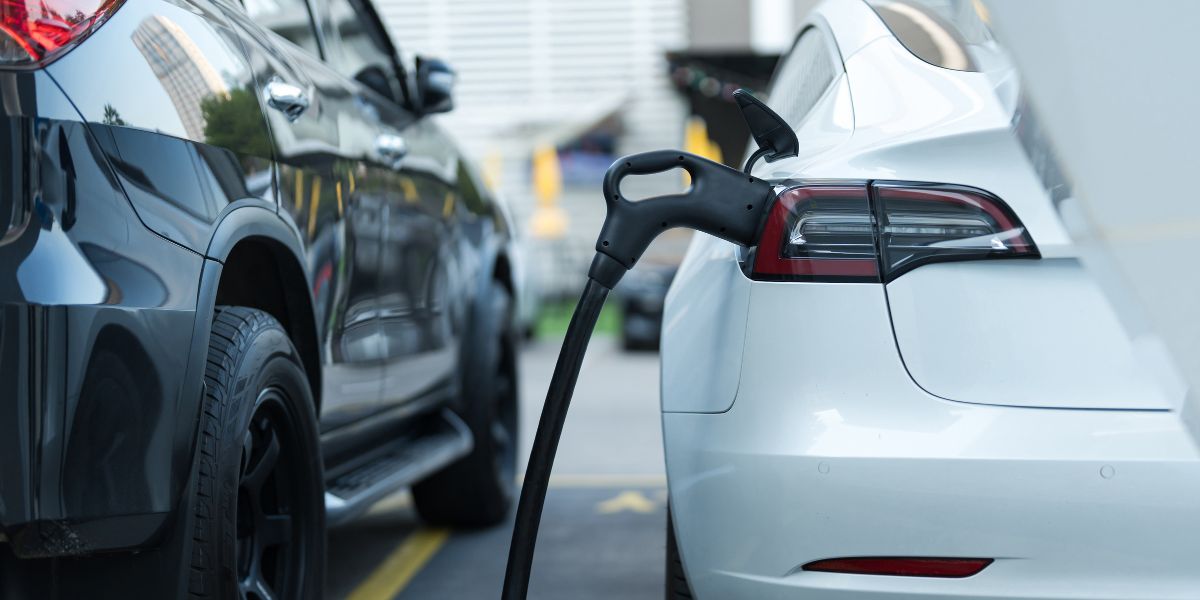There is now an effective consensus around net zero—and Australia has a range of promising sector-specific climate policies for getting there. Policymakers need to shift their focus to doing so at minimum cost.
Twelve years after Prime Minister Kevin Rudd shelved the Carbon Pollution Reduction Scheme, the climate wars are over. The only questions that remain are just how rapidly we get to net zero and the precise details of the mechanisms we use to get there. Ahead of the recent federal election, the then-opposition put forward a range of climate policies, but many questions remain. The now-government’s answers will be crucial.
A circuitous route to progress
Both major parties took a commitment to net zero by 2050 to the 2022 election—15 years after they both took an emissions trading scheme to the 2007 election. In 2006, recognising the need to achieve Australia’s Kyoto targets, Prime Minister John Howard commissioned a task group on emissions trading led by Peter Shergold. Its final report makes for fascinating reading all these years later.
Meanwhile, Opposition Leader Kevin Rudd and the state and territory governments commissioned Ross Garnaut to review the impacts of climate change on Australia and propose a policy response. The resultant bill to establish the Carbon Pollution Reduction Scheme twice failed to pass the Senate.
What happened next is well known: Julia Gillard replaced Kevin Rudd as prime minister, led a minority government and legislated an explicit carbon price, but was then defeated by Tony Abbott at the 2013 election, who swiftly repealed the scheme after just two years. Some of the same people tasked with establishing it were then tasked with dismantling it.
I worked on the Garnaut Review update back in 2010. Upon reengaging with climate policy a decade later, I was initially struck by just how little had changed in that time. Many of the same issues, such as the need for transitional assistance for communities and industry, continued to dominate the conversation and remained unresolved barriers to progress.
On the other hand, some significant progress had been achieved. The cost of action had fallen substantially, with innovations in wind, solar, and batteries driving renewable energy costs down tenfold. And most major countries were now moving more rapidly, something unthinkable in the wake of the intransigence at the 2009 Copenhagen climate summit.
Progress is aided by a keen sense of timing—knowing when pushing would be futile but being primed for any narrow window of opportunity.
This era of flux no doubt leads some policymakers and commentators to despair. How can a decade and a half have gone by and our national climate policy stands more or less in the same spot? It’s a bit like the tortured genesis of the Goods and Services Tax (GST), which took 25 years from being recommended in the 1975 Asprey Review to finally coming into force in 2000. In the intervening period, it was treated like a hot potato by both sides of politics.
At any given time, policy might not be exactly how we want it, but the great arc of progress bends toward the light. Progress doesn’t happen on its own, of course, resting instead on decades of relentless advocacy. Progress is aided by a keen sense of timing—knowing when pushing would be futile but being primed for any narrow window of opportunity. As it is by not letting the perfect be the enemy of the good.
Achieving progress at minimum cost
Despite the political rhetoric over the past decade or so, a carbon price is inescapable if we wish to reduce Australia’s emissions. All abatement comes at a cost. You can impose that cost explicitly, as with a carbon tax, or you can impose it implicitly, as with a binding emissions cap. Indeed, that very point was made in the Shergold review in 2006.
All abatement comes at a cost. You can impose that cost explicitly, as with a carbon tax, or you can impose it implicitly, as with a binding emissions cap.
We don’t have an economy-wide carbon price and we won’t any time soon, if ever. But we do have a range of promising sector-specific policies. Our focus should turn to ensuring each operates at minimum cost. While the new government made a series of important steps in forming its climate policy while in opposition, there are some significant gaps.
Improving the Safeguard Mechanism
The Safeguard Mechanism caps the emissions of the 215 highest-emitting industrial facilities—things like fugitive emissions from mining, and aluminium smelting. The government’s policy would see total emissions decline over time, contributing 7 percentage points of emissions reductions on 2005 levels by 2030. The mechanism is effectively an emissions trading scheme, but with permits under the baseline given away for free.
But there are some issues. First, even the Business Council of Australia recommended expanding the scheme from those with emissions greater than 100,000 tCO2 (tonnes of carbon dioxide) per year to 25,000 tCO2 per year. Expanding the scheme to more facilities would reduce the cost of achieving a specified emissions-reduction target.
Second, it was left unspecified how sector-wide emissions reductions would translate into facility-specific reductions (and how emissions-intensive, trade-exposed facilities would be handled). Pre-election policy material stated that the Clean Energy Regulator would tailor reductions to each facility, but this is cumbersome, opaque and open to rent seeking.
What we need is a broader Safeguard Mechanism with a principled, objective and transparent method of imposing emissions reductions across industry. Paired with better compliance measures for carbon credits, this should enable industrial emissions reductions at minimum cost while linking to other sectors to reduce costs even further.
Managing the exit of coal-fired power
When carbon pricing was floated in the 2006 to 2010 period, reductions would occur initially in the electricity sector. At that time, renewables like wind and solar were more expensive than gas, black coal, and brown coal, respectively. Those earlier schemes would see brown coal exit first, then gas progressively replace black coal, and then renewables replace gas.
In the decade since, the economics of electricity have completely transformed. A ten-fold reduction in the cost of renewables, most notably solar, and low capital costs have made renewables cheaper than coal or gas even in the absence of a carbon price. The major barrier that remains is ensuring the availability of sufficient, low-cost, low-emissions firming capacity to smooth out intermittent renewable energy.
Without a firm phasedown of coal, renewables investors have no clarity as to when existing capacity will exit the grid, and thus the supply and price to expect as new renewables come online.
The end of coal-fired power is inevitable. Closures are being brought forward at an accelerating pace, a trend that will intensify if AGL is reoriented in the way shareholder Mike Cannon-Brooks intends. As such, an explicit carbon price in the electricity sector is no longer necessary. Rather, the focus should be on ensuring the orderly exit of coal-fired generators.
There have been many proposals to do just that, including one I helped develop at Blueprint Institute. Without a firm phasedown of coal, renewables investors have no clarity as to when existing capacity will exit the grid, and thus the supply and price to expect as new renewables come online. The new government needs to solve this problem.
Removing barriers to new transmission infrastructure
The current regulatory and planning regime creates long lead times to connect new renewables to the grid. Given renewables’ decentralised nature, there are legitimate concerns about competition and coordination, with electricity transmission infrastructure the modern equivalent of the nineteenth century railroads that birthed US antitrust law.
There has been a sense in recent years that the Commonwealth has vacated the field of national energy policy. Right at the top of new energy minister Chris Bowen’s list of priorities should be to restore national leadership to the National Electricity Market—to resolve these issues of coordination, regulation and risk that are holding back new investment.
The government’s “Rewiring the nation” policy would see $20 billion of finance allocated to new transmission infrastructure, in line with the Australian Energy Market Operator’s Integrated System Plan. But the emissions reductions and power price savings the scheme was said to generate take for granted that financing would automatically solve all of the aforementioned problems.
If the fund is to operate like the Clean Energy Finance Corporation, as seems the intention, none of these challenges would be overcome. Finance is not the problem. If, instead, it is to operate like the National Broadband Network, effectively a publicly owned “transmission network service provider”, perhaps more could be achieved. But that brings its own risks.
The renewables lobby argues in favour of billions for new transmission, as is its wont. But that doesn’t mean it’s prudent. If the regulatory and planning barriers can be overcome and the exit of coal-fired power clarified, government finance is unnecessary. One way or another, the government needs to figure out what it wants its policy to achieve.
Abatement in other sectors
Light transport is straightforward to solve. The government was right to resist calls for electric vehicle (EV) subsidies, which offer poor value for money. Australia simply needs to adopt the same vehicle emissions standards used overseas—where our fleet is manufactured—so that product offerings here keep pace with those in other countries. The government should do this as soon as possible, and would have the support of the crossbenchers in both houses.
Agriculture is difficult. It’s true that, to date, much of Australia’s progress on emissions has been achieved through changes to land use, which have imposed costs mainly on landowners in rural and regional Australia. Resistance in the bush to bearing further costs may be fierce, presenting political challenges. But we can’t escape the fact that sparing 15 per cent of our emissions from further reductions means more of the load is borne elsewhere.
Transitional assistance for rural and regional Australia ought to receive greater attention from the new government.
While there may be innovations on the horizon to reduce emissions from livestock, emissions reductions today would require a reduction in head count. Ideally, we would separate questions of efficiency from equity—to ensure abatement occurs at minimum cost while compensating those adversely affected. Transitional assistance for rural and regional Australia ought to receive greater attention from the new government.
A shift in mindset for policy advocates
Over the next two decades, Australia’s economy will undergo a profound transformation—akin to the industrial revolution two centuries ago. Recent rhetoric from both ends of the spectrum downplaying the cost of the transition—that we can rely entirely on voluntary action, or that the transition offers only benefits—distract from the very real challenges the transition presents.
It will require major policy change and it will involve genuine sacrifice. The political progress Australia has now made narrows the range of possible outcomes for the better, ruling out further inaction. But there is still room for the transition to be poorly designed, achieved at an unnecessarily high cost. It’s incumbent on policymakers to move on from advocating progress at any cost to achieving what is now inevitable progress at minimum cost.
Steven Hamilton is Assistant Professor of Economics at George Washington University and Visiting Fellow at the Tax and Transfer Policy Institute at the ANU. He worked on the Garnaut Climate Change Review update in 2010 to 2011 and recently developed climate policy proposals as Chief Economist at Blueprint Institute.











